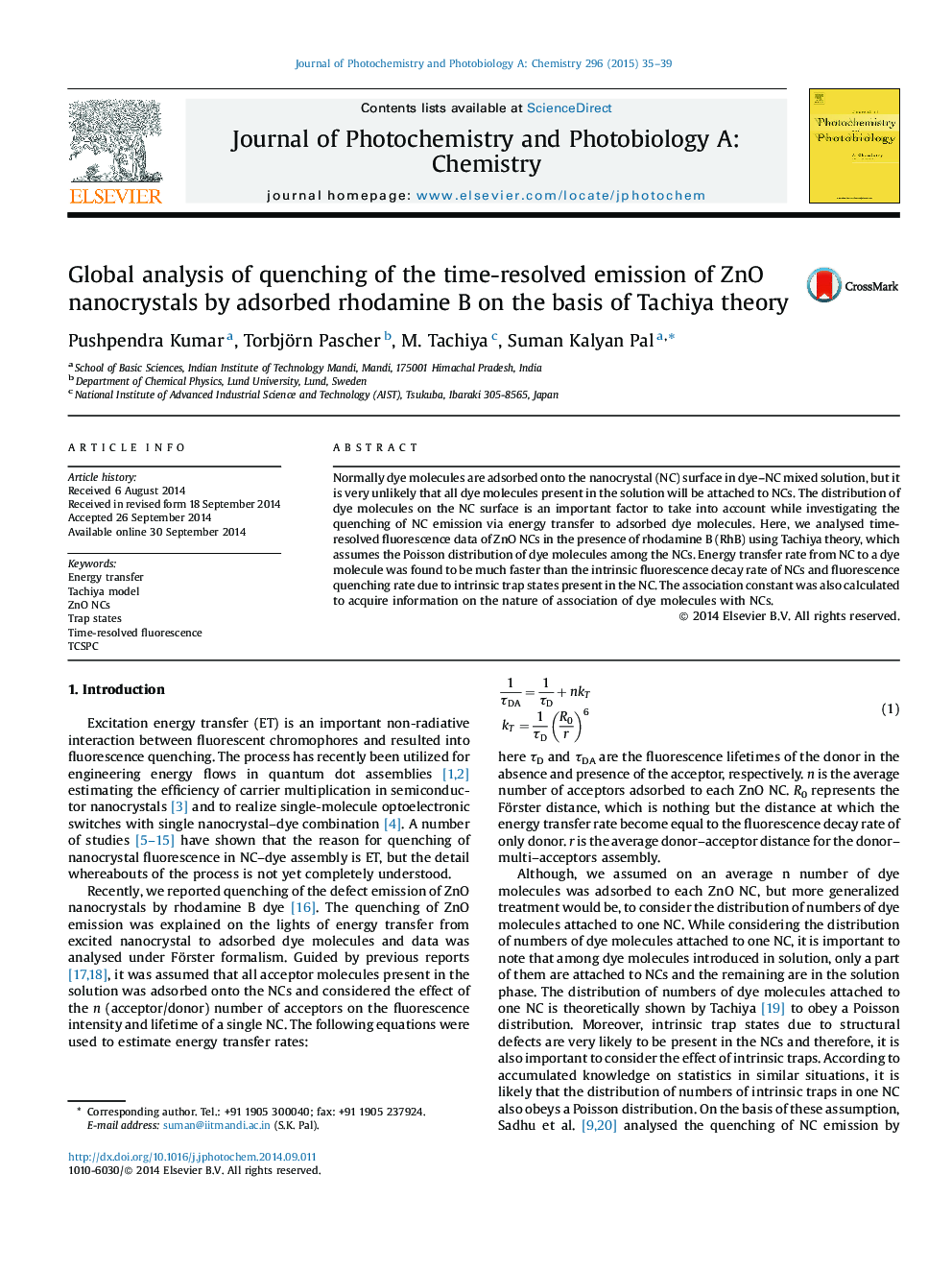| Article ID | Journal | Published Year | Pages | File Type |
|---|---|---|---|---|
| 26510 | Journal of Photochemistry and Photobiology A: Chemistry | 2015 | 5 Pages |
•Global analysis of emission decay kinetics of rhodamine B (RhB) adsorbed ZnO nanocrystals (NCs) using Tachiya model is presented.•All dye molecules present in the solution are not adsorbed onto NC surface, but they follow the Poisson distribution.•Tachiya model provides a clear picture of radiative and non-radiative decay pathways of excited ZnO NCs in the absence and presence of RhB molecules.
Normally dye molecules are adsorbed onto the nanocrystal (NC) surface in dye–NC mixed solution, but it is very unlikely that all dye molecules present in the solution will be attached to NCs. The distribution of dye molecules on the NC surface is an important factor to take into account while investigating the quenching of NC emission via energy transfer to adsorbed dye molecules. Here, we analysed time-resolved fluorescence data of ZnO NCs in the presence of rhodamine B (RhB) using Tachiya theory, which assumes the Poisson distribution of dye molecules among the NCs. Energy transfer rate from NC to a dye molecule was found to be much faster than the intrinsic fluorescence decay rate of NCs and fluorescence quenching rate due to intrinsic trap states present in the NC. The association constant was also calculated to acquire information on the nature of association of dye molecules with NCs.
Graphical abstractFigure optionsDownload full-size imageDownload as PowerPoint slide
